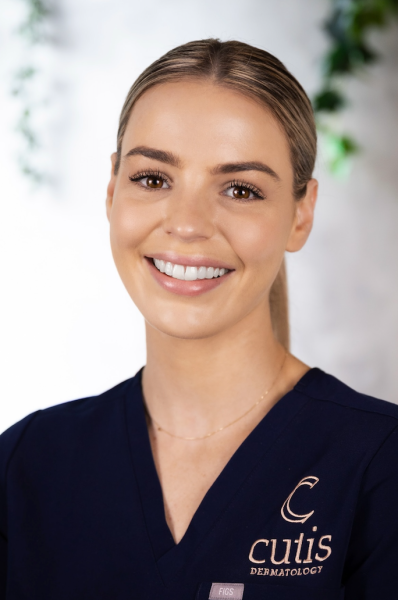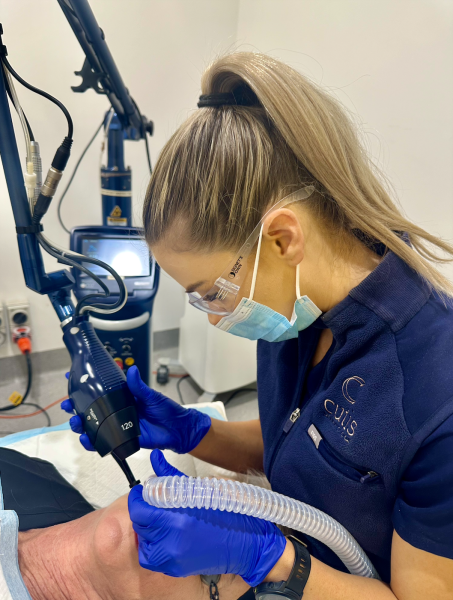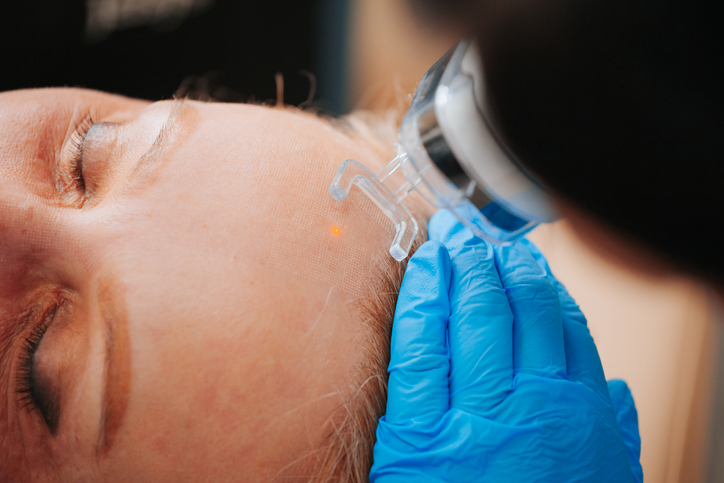Is this a time of ‘out with the old, in with the new’?
Full-field ablative laser resurfacing, a technique that vaporises both the epidermis and papillary dermis, has been in practice since the 1980s. However, this method has fallen out of favour due to its extended recovery times and associated risks. The evolution of ablative laser technology to the fractionated state can be seen as one of necessity.
On the flip side, fractionating the laser energy into smaller individual spot sizes, targeting only a portion of the treated area, allows for a more distributed effect. This approach may increase the number of treatments but minimises downtime and complications. Although full-field ablative laser resurfacing may not be as prevalent as before, it still holds relevance in select cases where a more aggressive approach is warranted.

What indications is ablative laser typically used for?
Ablative lasers are commonly utilised in dermatology to target a variety of skin conditions, spanning from mild to severe facial wrinkles, acne scarring, surgical or traumatic scars, stretch marks, actinic keratosis, rhinophyma, to uneven pigmentation. In laser resurfacing, the aim is to tailor the extent of skin damage to meet the specific needs of each patient.
The decision for a practitioner to opt for a full-field ablative laser procedure rather than a fractionated one often arises when deeper and more extensive skin rejuvenation or resurfacing is necessary. Conditions such as severe wrinkles or scarring, rhinophyma, actinic cheilitis, actinic keratosis, xanthelasma, and sebaceous hyperplasia may require a more aggressive treatment approach with a full-field ablative laser.
Who can actually perform this treatment? Is sedation typically required?
In Australia, regulations regarding who can perform ablative laser resurfacing vary depending on the state or territory, as well as the specific regulations set by licensing authorities. Full-field ablative laser treatments should be exclusively administered by qualified medical professionals such as dermatologists, plastic surgeons, or cosmetic physicians.
Their comprehensive medical training equips them to thoroughly assess patient suitability, manage any potential complications, and prescribe suitable treatments.

Depending on state or territory regulations, fractionated ablative laser resurfacing may be delegated to nurses or dermal clinicians, under the supervision of a medical doctor. The level of supervision required may vary depending on the jurisdiction and their individual work experience.
A question arises as to what extent fractional laser resurfacing approaches a full-field ablative treatment? This depends on two main factors; density/coverage and energy level. Higher-density treatments cover more of the skin, closely resembling the effects of full ablative treatment.
Additionally, the amount of energy delivered by the laser influences penetration depth and tissue ablation. Higher energy levels can induce deeper tissue effects, resembling those seen with full ablative treatments. It’s important to note that nurses and clinicians administer treatments under the supervision of a medical doctor and based on their experience, ensuring they don’t inadvertently move into fully ablative treatment territory.
There are various anesthesia methods available for laser resurfacing procedures, and the specific type used depends on the type of laser resurfacing being performed (full-field vs fractioned). These methods may include topical anesthesia, infiltrative local anesthesia, or conscious sedation, which are managed by the overseeing medical professional.
What downtime is involved with this type of procedure, and what else should patients typically expect?
The downtime associated with ablative laser procedures varies based on factors such as treatment depth, intensity, the treated area’s size, and the individual’s immune response. Typically, patients can expect downtime ranging from 5 to 12+ days.
Immediately after the procedure and up to day 3, patients may experience redness, swelling, exudate, and a sunburn-like sensation. As healing progresses, crusts or scabs may develop in the treated area. Between days 4-6, swelling, crusting, and exudate usually reduce, leaving the skin red until fully healed.
It’s essential to advise patients that redness and sensitivity may persist beyond 2 weeks, but these symptoms can be alleviated with LED therapy or vascular lasers.
Patients should also anticipate some discomfort after the procedure, manageable with over-the-counter pain relievers or prescribed medications if necessary. They may also receive topical or oral medications like antibiotics or antivirals for effective healing.
Close follow-ups, typically scheduled for day 1, day 7, and day 14 post-procedure, are vital, with extra appointments arranged sooner if needed. Normal skincare routines can often be resumed after two weeks, and makeup can be applied once the crusting has healed and sensitivity has subsided.
When would this type of procedure come into a treatment plan? Is it typically worked towards with prepping with other treatments, or is it just wasting time in doing so?
Ablative laser resurfacing typically doesn’t require preparatory treatments. However, it’s necessary to consider that prepping the skin with topicals can help minimise the risk of adverse outcomes. For instance, post-inflammatory hyperpigmentation can be reduced using topicals like tyrosinase inhibitors, while sensitised skin may benefit from prepping with topical anti-inflammatory agents.
Overall, while fractionated ablative laser technology has revolutionised skin resurfacing with its reduced downtime and complications, full-field ablative lasers continue to hold relevance in dermatology.
Read the latest issue of SPA+CLINIC below:
There are 5 ways you can catch up with SPA+CLINIC
- Our quarterly print magazine, delivered to your door. Subscribe here.
- Our website, which is updated daily with its own completely unique content and breaking news.
- Our weekly newsletter – free to your inbox! Subscribe here.
- Our digital magazine – click here to view previous issues.
- Our social media – see daily updates on our Instagram, Facebook & Linkedin




